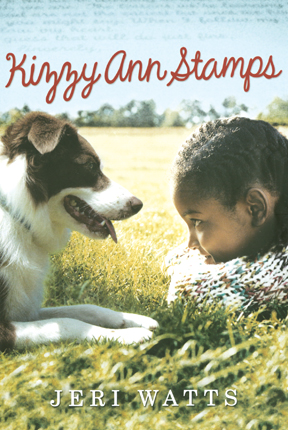Full Text Reviews: School Library Journal - 08/01/2012 Gr 5–8—During the summer of 1963,12-year-old Kizzy Ann Stamps writes letters to the teacher who will instruct her at the new, integrated school. Kizzy is forthright in her first letter; she does not want to go to a school with white children. Miss Anderson is understanding, and as Kizzy begins to trust her, she shares stories about Shag, the stray border collie her family adopted. Through her love of Shag, Kizzy reveals what she understands about integrated life. When classmates tell her that blacks can't participate in dog shows, she writes, "I made a mistake and let down my guard. I let them in, and now I feel a fool." Kizzy is sensitive yet sassy, and she bounces back with fierce determination. Her brother, on the other hand, suffers from discrimination at the upper school. When he causes trouble, a neighboring white boy fixes the problem, and Kizzy learns to see each person as an individual. Yes, there are whites who hate her, but she learns to trust herself and her feelings. Some passages go on about border collie herding, but they don't overwhelm the novel. This is a touching story with a sharp and insightful protagonist. One hopes that it will find its way into the hands of feisty girls looking for a strong role model.—Pamela Schembri, Newburgh Enlarged City Schools, NY - Copyright 2012 Publishers Weekly, Library Journal and/or School Library Journal used with permission. Bulletin for the Center... - 10/01/2012 This epistolary novel opens in the summer of 1963; Kizzy Ann Stamps is about to start attending the newly integrated public school and, at the suggestion of her long-time teacher at the black school, writes a letter of introduction to her new teacher, Miss Anderson. Kizzy continues to write Miss Anderson throughout the summer (and Miss Anderson writes her back, though those letters are referenced rather than included), and, when school starts, this correspondence continues in the form of a journal. This unusual format, in combination with Kizzy’s rather direct style (“I believe in telling the truth. So here it is: I don’t want to change to a white school. Just so you know. I don’t want to”), works well in giving voice to Kizzy’s character, a girl who, as an African-American child living in mid-century rural Virginia, ordinarily would not have the opportunity to tell a white woman exactly what she is thinking and feeling about the changing times. The novel is particularly strong at demonstrating how complicated the start of integration was for young people; while the schools were officially integrated, there were huge divides among the students, and tremendous inequality continued to permeate their school experience. The omnipresence of racism is also vividly depicted (when Kizzy hears about the assassination of JFK, she writes, “I hope no black man did this. I’m running home to my barn to hide, just in case”). Civil rights themes aside, this is also the story about Kizzy and her beloved dog Shag; in the end, this relationship adds to the integration themes as Kizzy works with a Scottish farmer to train her dog, assisted by the white neighbor boy. The novel gets a bit overambitious as multiple story elements are introduced to the central theme, but, for the most part, the epistolary format carries the central narrative as well as the many side stories. This would make an excellent readaloud for a civil rights unit and could also be used to explore historical points of view. An author’s note is included. HM - Copyright 2012 The Board of Trustees of the University of Illinois. Loading...
|



